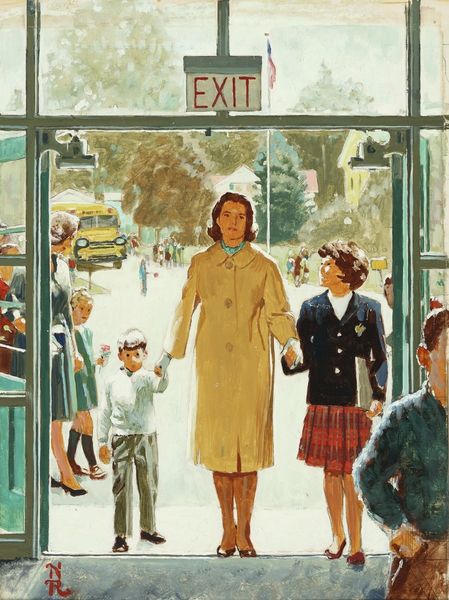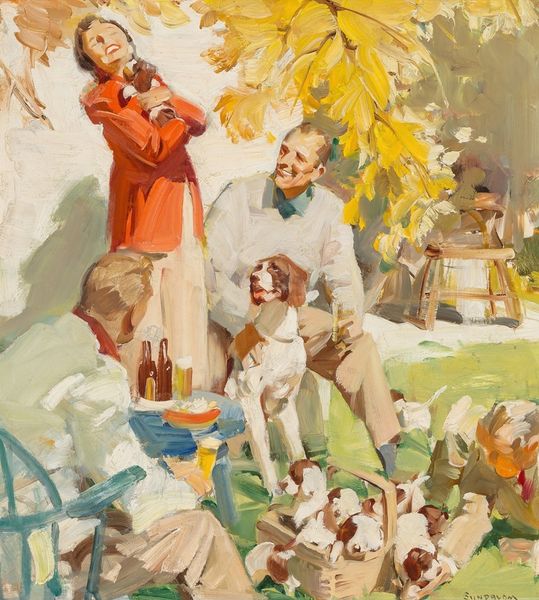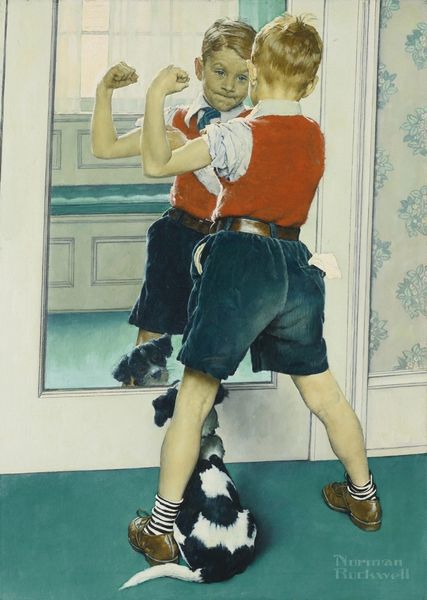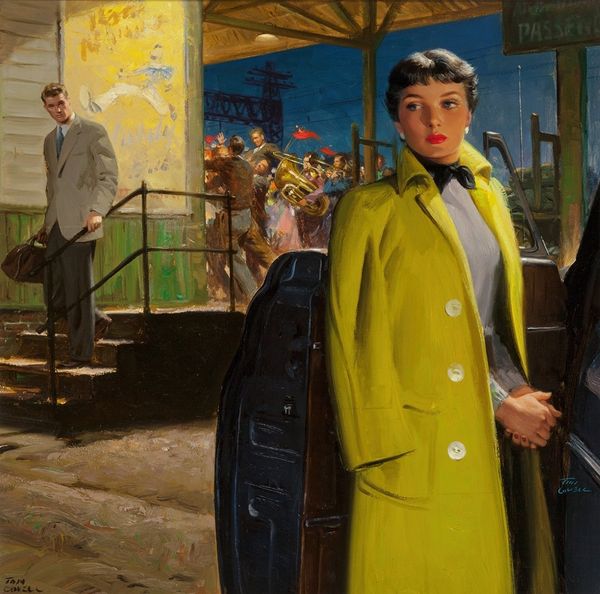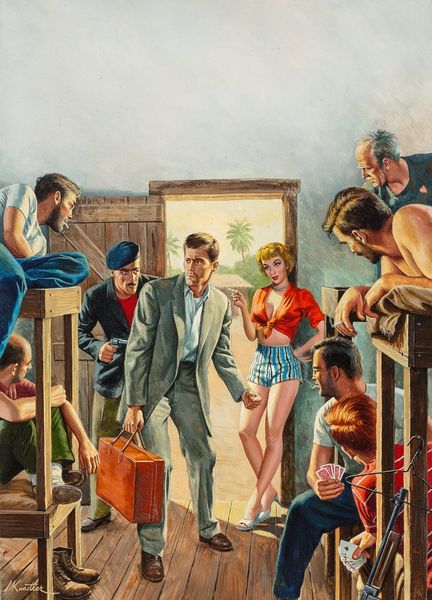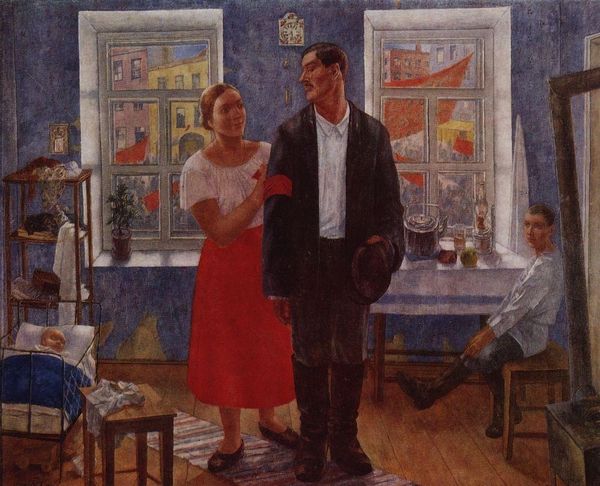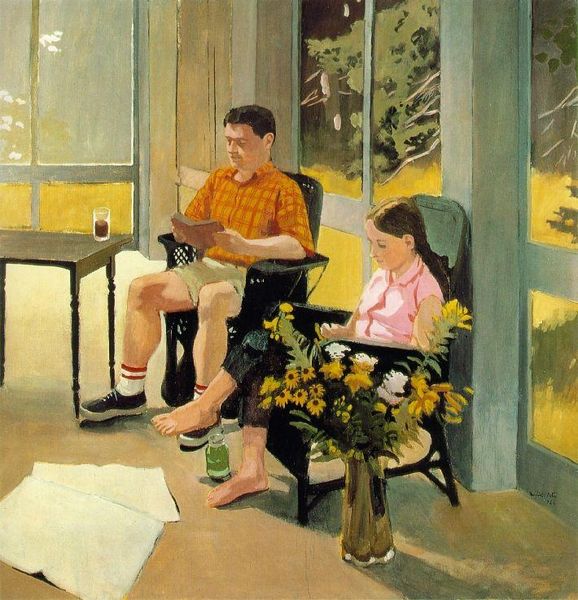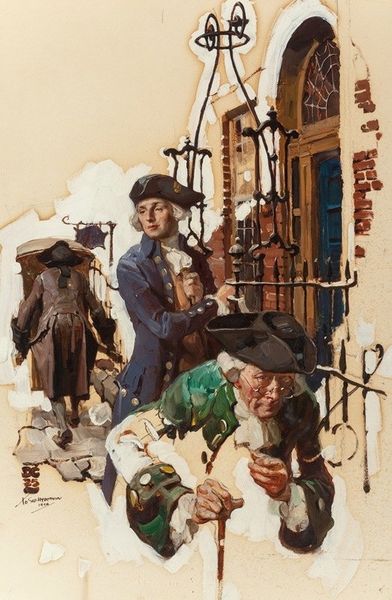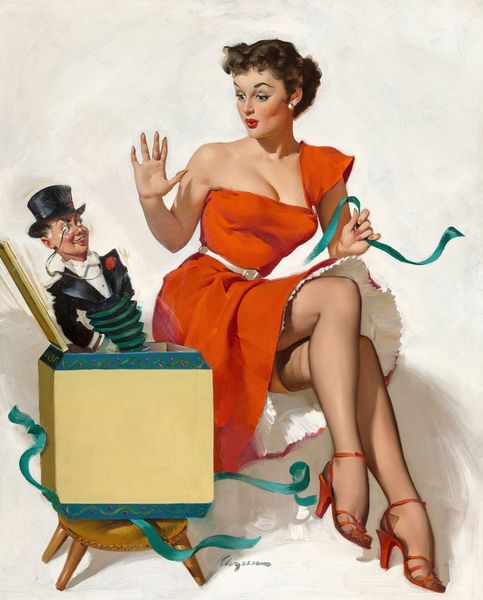
Copyright: Modern Artists: Artvee
Curator: Looking at Tom Lovell’s "The Blue Hour," painted in 1951, I am immediately struck by the image's apparent mundane reality. At first glance, this tableau simply presents a roadside scene unfolding around a public telephone booth. Editor: It’s so ordinary that it practically hums with unspoken narratives. There is such controlled chaos as it relates to gender and family that permeates through the painting. Curator: Precisely! The figures arranged around the booth—a stylish woman, her children, a state trooper within—establish clear focal points and suggest stories beyond what’s immediately visible. Notice the trooper inside the telephone booth. He becomes an active participant in the domestic drama. The telephone booth, glowing against the diffused light of what might be dusk or dawn, gains prominence as an altar to personal connection. Editor: Considering the time, 1951, this red phone booth acts as a space of both contact and divide, standing staunchly amid a world about to be thoroughly disrupted by television and media technologies. The color creates visual drama. Red, standing out, reminds me that war had only recently ended. The policeman might also be related to themes of the Korean War in 1951, further suggesting national narratives during the American century. It gives an undercurrent of threat to this apparently ‘peaceful’ composition. Curator: Interesting. You have noticed how public communication intersects with these threads of individual story-telling. The symbolic implications of Lovell's careful composition could extend toward examining themes of community life and modern detachment amidst burgeoning technological advances. The choice of figures – woman, child, law enforcer – as archetypes is hard to ignore, especially their juxtaposition with signs that indicate connection and communication in modern existence. Editor: It highlights, perhaps, the period’s societal anxieties and idealized images. A man and woman divided, seemingly connected, a family growing apart, the role of State; here the telephone embodies that push and pull perfectly. What does all this imagery do now, looking at it from a further removed present day, as we struggle with notions of authenticity in pictures of everyday life? Curator: I think we gain perspective on how artifacts, settings, and people – how we remember and see those symbols together – transform the simple story into a tapestry layered through social expectations. It allows for discourse about identity, change, or lack thereof – which gives art staying power beyond era or social constructs. Editor: In looking more deeply, there's so much more revealed beyond surface realism that this art piece gives – providing commentary both then and now. Curator: A timeless observation then, and a telling snapshot that we continue dissecting through modern interpretations.
Comments
No comments
Be the first to comment and join the conversation on the ultimate creative platform.
